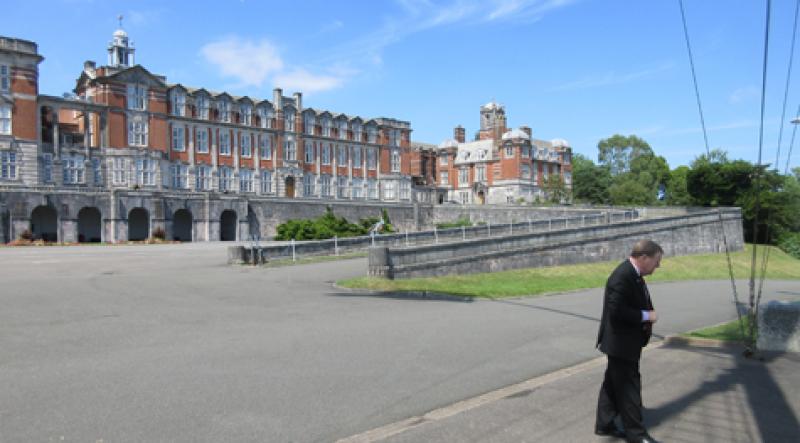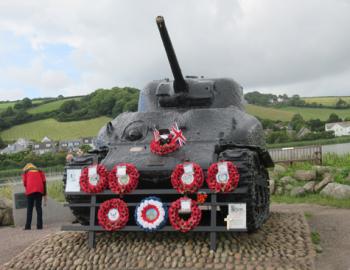Britannia Royal Naval College
This item appears on page 14 of the October 2017 issue.
In summer 2017, my wife and I paid our annual visit to Cornwall and Devon, England. After a week in a National Trust apartment near Port Isaac, Cornwall (“Doc Martin” country), we rented an apartment in Dartmouth, Devon, through Coast & Country Cottages (1 Sail Loft, Mayors Avenue, Dartmouth, Devon, England, TQ6 9NG, U.K.; phone +44 1548 843773, www.coastandcountry.co.uk).
The apartment where we stayed (13 Bakers Dozen, Dartmouth House) was fully equipped and centrally located. We paid about £900 (near $1,159) for our week-long stay in the modern, 2-bedroom, 2-bath apartment. There were several similar apartments for rent in the 3-story building.
Our apartment was just two minutes from a Marks & Spencer food hall, but the main attraction for us was the Britannia Royal Naval College, somewhat akin to the US Naval Academy in Annapolis.
We arranged a tour of the college through their website (www.britanniaassociation.org.uk/tours). The tour, which we took on July 12, 2017, cost £13 (near $16.75) per adult or £11.25, senior.
Our tour guide was Peter, a former naval officer and also a graduate of the college, who gave a thoroughly enjoyable 2½-hour tour full of history and insights. We highly recommend this tour.
One thing we learned about — when the college was bombed in WWII, the cadets were evacuated to a safer location to continue their training. The college was then taken over by US forces for use as headquarters while they prepared for the D-Day landings. This led to large-scale maneuvers being carried out nearby, and whole sections of the countryside, including villages and farms, were commandeered and evacuated by the military for training.
Landing exercises were conducted at Slapton Sands, just south of Dartmouth, and a US monument commemorates the sacrifices of the local population and the gratitude of the American “invaders.” Nearby is a Sherman tank that was lost in the exercises and which was recovered in 1984 after spending more than 40 years under water.
The exercises often used live ammunition per the orders of General Eisenhower, but this didn’t cause any major casualties. Casualties did occur during Exercise Tiger, when the practice was interrupted by a fleet of German E-boats. During the ensuing battle, 749 US servicemen lost their lives. They are remembered and listed on a memorial near the Sherman tank.
Because of the need for utmost secrecy, this incident was not widely known about until after the war. A major fleet left Dartmouth for the Normandy coast on June 5, 1944.
BOB DEAR
The Woodlands, TX



